As known, today more than 600 companies are developing and producing smartphones. However, almost 80% of the world market belongs to ten major manufacturers, including South Korean Samsung (21% – Q3 2019 results) and LG (3%), American Apple (12%), Finnish Nokia (1%) and Chinese Huawei (13%, including Honor), Xiaomi (9%), Oppo (9%), Vivo (8%), Lenovo (3%, including Motorola), Tecno (1%).
Previously, many leaders actively used the strategy of intensive expansion of the lineup. For example, in 2014 Samsung introduced 56 new models, and LG – 41 new smartphones. Of course, it requires significant costs, but it’s very effective as a competition tool. In this case, companies use the consumer market as a highly effective platform for testing their products. Of course, any bestseller most accurately characterizes the most promising trends for the further device improvement. Today, some companies are abandoning this strategy because of its high cost. But powerful giants, including Samsung, can afford to use it further.
2020 was no exception and the company introduced a wide range of new models. But, of course, the flagship series always cause the greatest interest among consumers and experts. Samsung fully met these expectations by introducing the continuation of the gorgeous Samsung Galaxy S10 Series 2019.
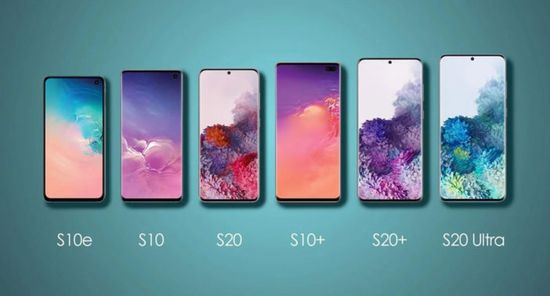
But the annual improvement of any modern consumer electronics has an additional aspect. In particular, its success directly depends on the real ratio between the increase price and the expansion of consumer characteristics. Unfortunately, sometimes companies offer new models following the established tradition. As a result, the price / quality ratio of last year’s models is sometimes better, and new products quietly disappear from the market. But the Samsung Galaxy S20 is clearly not in this category.
Price
As usual, this aspect is one of the main evaluation criteria. But, of course, it has a very high dynamics. At the time of writing, the price of the compared models ranged from $ 600 to $ 1,400, covering almost all price segments.
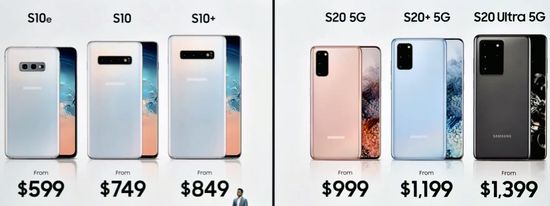
The price of S10 5G today is about $ 1,000.
Quite conditionally, the price difference between the corresponding models (for example, S10e / S20 5G) can be estimated at about $ 400, or several tens of percent. In addition, many hope for a further reduction in prices for S10 due to various coupons with discounts, etc. Of course, such an impressive growth should be based on quite substantial improvements. However, the developers are quite coped with this task. The company has improved almost all components, including the hardware, screen, battery, camera, etc.
Hardware and screen of S20/S20+/S20 Ultra vs S10e/S10/S10+/S10 5G
S20 has Qualcomm Snapdragon 865 (Samsung Exynos 990 in Europe) system-on-chip with LPDDR5 (6400 Mbps), UFS 3.0 (Universal Flash Storage) RAM and X55 5G modem vs Snapdragon 855 (Exynos 9820 Octa in Europe) with LPDDR4X (4266 Mbps) and UFS 2.1 in the S10. For comparison, UFS 3.0 offers 2100/410 Mbps read / write speeds, while UFS 2.1 only supports 850/250 Mbps.
As known, Qualcomm Snapdragon, Exynos, Kirin and MediaTek compete in this segment.
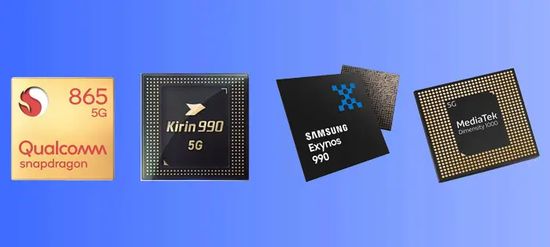
But Samsung smartphones use Qualcomm chipsets for the US market and their own Exynos for Europe. As known, Snapdragon traditionally win in performance, but lose in power consumption. Accordingly, Exynos heat up less during operation. In addition, Exynos supports a hybrid 2 SIM / 1 SIM + MicroSD slot, and Snapdragon only 1SIM + MicroSD without a second SIM card. But, in any case, Snapdragon, unlike Exynos, supports the CDMA (Code Division Multiple Access) standard, which is used by American operators, including, for example, Sprint and Verizon. Moreover, Qualcomm holds CDMA patents. As known, Samsung Exynos uses European GSM, but does not support CDMA.
Of course, S20 uses Android 10 vs Android 9 (Pie) in S10.
S20 models have 6,2/6,7/6,9″ Dynamic AMOLED 2X 120 Hz Display with Quad HD+ (3200 x 1440) resolution and 563/525/511 ppi. S10 phones use 5.8/6,1/6,4/6,7″ Dynamic AMOLED 60 Hz Display with 3040 х 1440 (S10e: 2280 × 1080) resolution and 438/550/522/505 ppi.
But smartphones support 120 Hz refresh rate only for Full HD, reducing it to 60 Hz for Quad HD. Of course, 120 Hz provides very smooth playback and instant scrolling screen, but this mode significantly increases power consumption. Solving this problem, the company limited the resolution for this mode.
Camera
S20 got a new 64MP telephoto camera with Hybrid Optic Zoom 3x. S20 Ultra additionally uses 108MP wide-angle camera with extra-large 1/1.33-inch Isocell Bright HMX sensor and Hybrid Optic Zoom 10x, and 40MP Selfie Camera.
Moreover, the company for the first time in four years updated the matrix from 1/2.55 to 1/1.76 inches for 12MP wide-angle camera. Unfortunately, Samsung refused an adjustable aperture. For example, the S10 supports Dual Aperture F1.5 mode / F2.4 mode depending on the ambient light.
The Galaxy S20 Ultra uses innovative Nona-Binning, Tetra-Binning and Re-Mosaic technologies.
Nona-Binning merges nine pixels into one, switching the 108MP sensor to 12MP photo. Of coyrse, larger pixels produced by this technology capture more light, improving clarity even in low ambient lighting. Tetra-Binning combines only four pixels and is designed for 48MP matrix. On the contrary, re-mosaic algorithm remaps pixels into a conventional RGB pattern, producing more detailed images in bright light conditions.
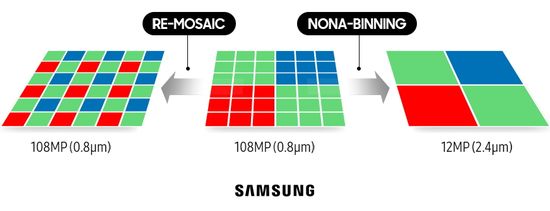
The independent operation of each pixel when changing the structure of RGB dots using Re-Mosaic uses a sensor crop and provides up to 10x high ratio zoom.
The Space Zoom technology uses a combination of Hybrid Optic Zoom, and super resolution zoom technology, including AI multi-frame processing (AI-powered digital zoom.)
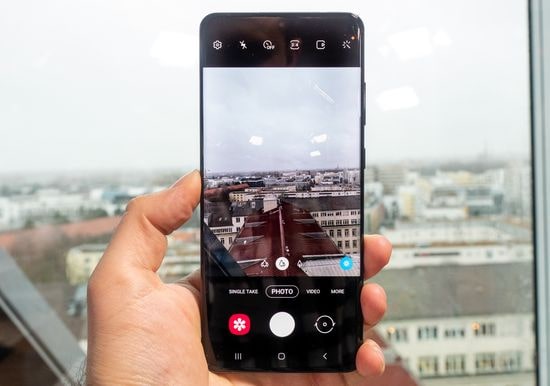
The company has developed a folded zoom lens to squeeze more zoom capability into a small space. Its lens is located at the camera bottom of the smartphone. Light is reflected by a prism onto several folded optical elementss that increase the focal length.
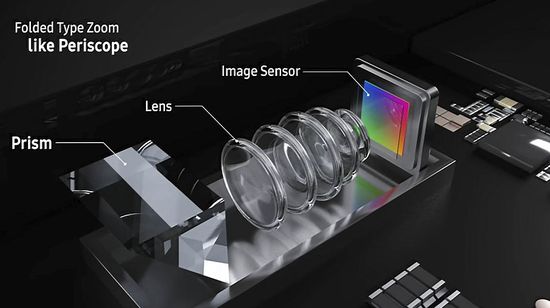
As known, periscopes use a similar technology. This innovation significantly expands the zoom capabilities while reducing the height and width requirements of the camera.
Other features
In addition, the S20 provides 8K video recording at 24fps (7680 x 4320) and 4K UHD video recording at 60fps (3840 x 2160).
Battery capacity in the new series increased to 4000/4500/5000 mAh vs 3100/3400/4100/4500 mAh in S10. In addition, S20/S20+ and S20 Ultra use a 25 and 45-watt Super Fast Charger vs 15 W for S10 line. But S10 5G has 25-watt charger.
According to the test results, the sound quality of the S20 is higher, but the perception of the difference will require perfect musical ear.
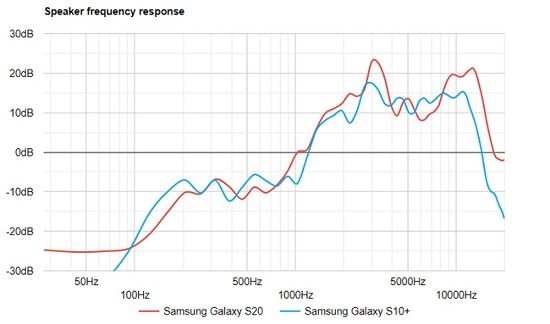
Of course, 5G support has become one of the major improvements of the S20 vs 4G LTE in the S10. The S20 supports 5G millimeter-wave networks used by Verizon, AT & T, and T-Mobile, and the low and mid-frequency bands used by AT & T, Sprint, and T-Mobile.
Conclusion
1. Today, the Samsung Galaxy S20 Ultra is one of the best camera phones. This choice will be optimal for fans of shooting using a smartphone.
2. 5G support provide excellent prospects for S20, but today it may seem premature.
3. Of course, Qualcomm Snapdragon 865 with LPDDR5 and UFS 3.0 provide excellent performance for the S20 series. But in most cases, the performance of even the Snapdragon 855 with LPDDR4X and UFS 2.1 on the S10 is redundant today.
4. 120 Hz refresh rate is ideal for gaming, but it quickly discharges the battery.
5. Testing confirms the improvement in audio quality, but perceiving this difference requires very good ear for music.
6. S20 wins in the size and resolution of the screen, but, accordingly, loses in power consumption and dimensions.
7. S20 use a more capacious battery with more powerful and faster charging, but the increased power consumption of the screen and chipset compensate for these factors.
8. Of course, 8K video recording expands the shooting possibilities. But the limited ability to play 8K content significantly reduces the value of this bonus.
9. Company refusal to use the 3.5mm audio jack may seem a controversial decision for some consumers. But today, many companies have already made a similar decision. Now Samsung has joined this trend.
10. The magnificent Samsung Galaxy S10 is significantly cheaper, which provides these models with excellent prospects along with the S20. But the situation can radically change by the end of the year if 5G is successfully implemented.
This video offers the Samsung Galaxy S20 vs Samsung Galaxy S10.

Pingback: Smartphone vs tablet today - The Appliances Reviews
Pingback: The evolution of QLED and OLED technologies in hybrid QD-OLED technology - The Appliances Reviews